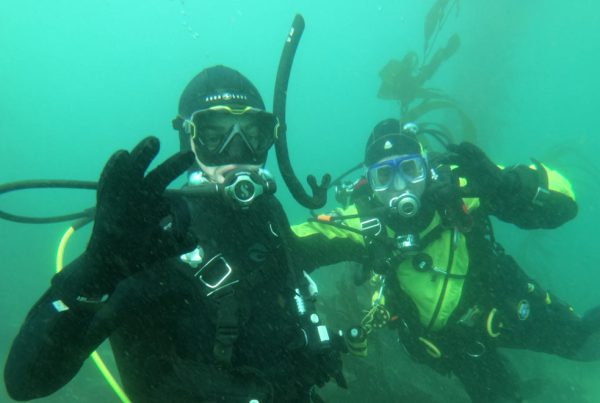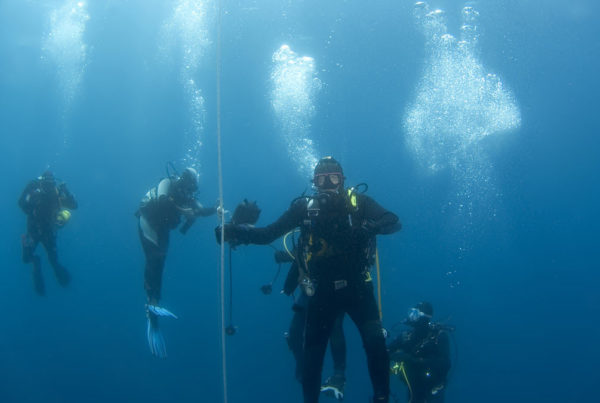Night diving is an exciting perspective on the underwater world. It opens opportunities for seeing different kinds of marine life and a variety of unusual behaviors from underwater animals. But night diving can have special challenges that can be distracting from the overall experience. While you want to be a safe diver, you don’t want to be so preoccupied by the dive itself so as to miss the scenery and creatures. A few adjustments to your diving techniques, habits, and procedures will make your night diving a much more enjoyable experience.
PREPARATION
Anybody that has been night diving knows that you need three lights: a primary, a backup, and a diver locator light. Bring more. Lights have an annoying habit of failing. If just one of your three lights fail between your house and the dive site from being banging around in the dive bag, accidentally being turned on, or is overused in pre-dive preparation, you are out of luck and out of the dive. Bring a fourth light and a cylume (chemical light stick) as your backup diver locator light. A good choice for a fourth light would be an inexpensive light in size and power, about half way between your primary and smaller backup. Use this for your pre-dive preparation and not risk wearing out your primary or backup light.
ALTERNATIVE LIGHT RIGS
Headlights are an excellent choice for freeing up your hands. Choices in headlights have exploded as of late. There are now lightweight compact units costing less than $50, sometimes only $30. While these lower end headlights are not powerful enough to be used as a primary light it gives the diver the ability to use both hands for close-in work.
More powerful headlights, with the battery pack worn separately from the headlight on the tank assembly, can serve as a primary light. The freedom of this arrangement is dramatic. With some, the cost is comparable with a powerful hand-held primary light. The only disadvantage is a diver inadvertently blinding his buddy just by looking at them.
These rigs with light heads separate from the battery pack are also available in mid and high-end models, some costing several hundreds of dollars. But if you want to bring the sun underwater with you, this is the way to go.
An alternate is arrangement is to wear the light head on the back of your hand. The hands are still free and the beam of light is easier to direct precisely.
PROTECT YOUR NIGHT VISION
Your eyes will adjust to the darkness and give you a better, more balanced view of the night time underwater world, but you must give your eyes time to adjust. If possible, avoid brightly lit areas. In setting up your gear, use a lower powered light. And, most importantly, ask your buddy to keep his or her light out of your eyes.
KELP
Diving in kelp is wonderful and the dangers of entanglement are overrated. Even so, diving in kelp at night becomes more problematic. It is just harder to keep track of kelp and your body in the dark.
Streamlining your gear is always a good idea but when night diving, it becomes even more important, especially in kelp. While it is usually easy to avoid or deal with snags in the daytime, at night you may become less aware of where your body and gear are in relation to the kelp. Secure loose straps (knife, fins, tank bands, weight belts, etc.), remove unnecessary items and clip octopus and gauge consoles close to your body.
When you enter the water from a boat, look before your leap. Target a good clearing in the kelp before you jump. Jump in with your light on, so you can make a quick assessment of your situation once in. When night diving in a kelp forest, avoid the thickest sections and plan your dive carefully in order to have plenty of air remaining to return to the boat or shore under the kelp rather than having to crawl across the top in the dark.









